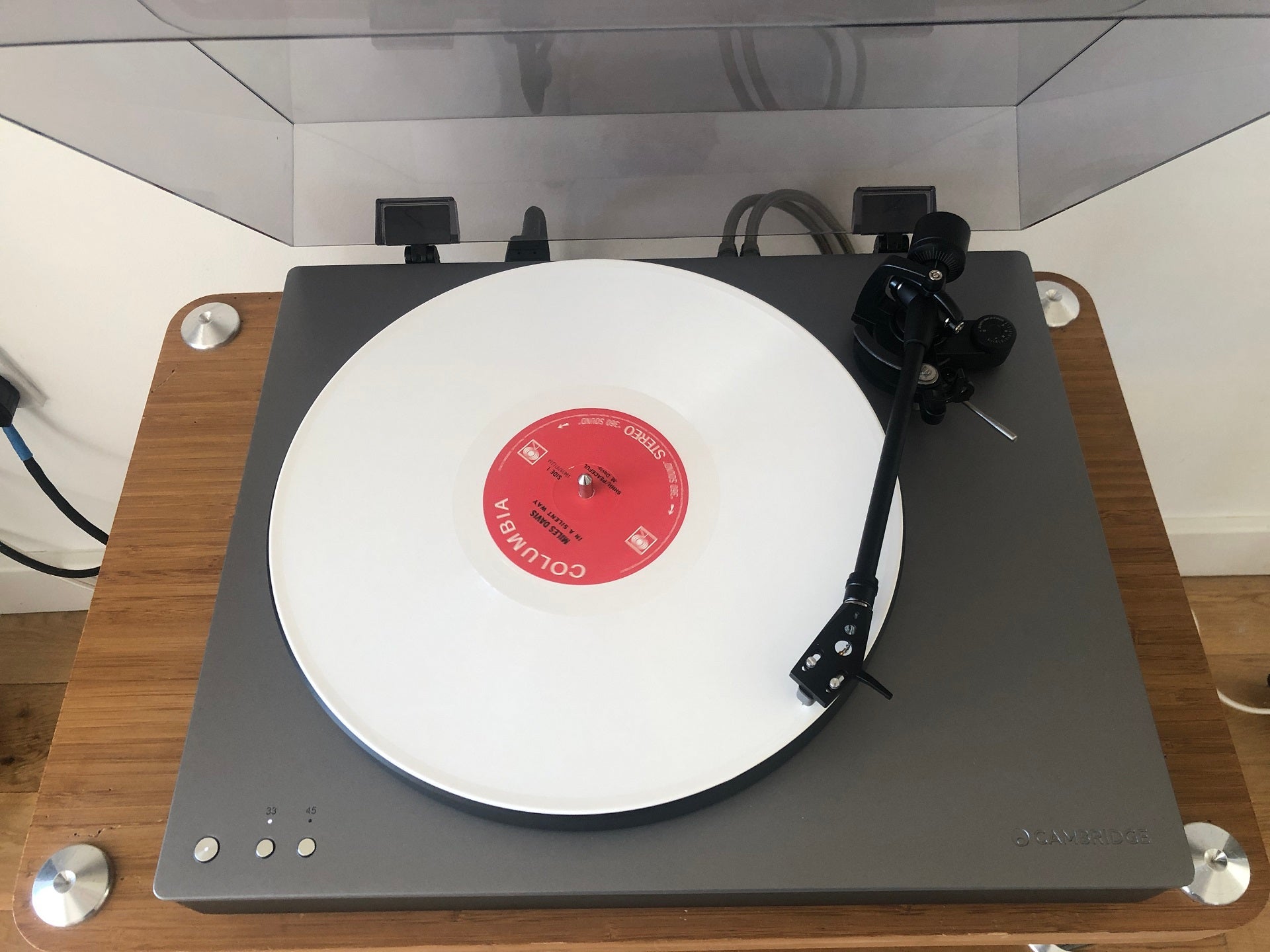Verdict
The money you spend here could buy you a turntable that sounds a little more complete than the Cambridge Audio – but it won’t buy anything approaching the brilliance of the Alva TT V2’s specification.
Pros
- Extensive specification by turntable standards
- Poised, detail and engrossing sound
- Built to last
Cons
- Not the last word in audio excitement
- Sounds better when hard-wired
- lots of price-comparable alternatives
Introduction
In 2019, Cambridge Audio committed hi-fi heresy with the launch of its Alva TT turntable. Yes, it was recognisably a record player; but its integrated phono stage brought a degree of convenience to the notoriously inconvenient format.
Even more remarkably, the Alva TT featured aptX HD Bluetooth streaming at an undeniably high-resolution 24bit/48kHz standard – which meant a thoroughly unturntable-like level of flexibility where positioning, connections and so on were concerned.
Three years later, here’s the Alva TT V2. At a glance, it’s very similar indeed (except for the price tag, that is); but there have been changes, amendments and upgrades. So do these maintain Cambridge Audio’s position as purveyor of the world’s most convenient (and thus least audiophile) audiophile turntable?
Availability
- UKRRP: £1699
- USARRP: $1999
- EuropeRRP: €1999
- CanadaTBC
- AustraliaTBC
The Cambridge Audio Alva TT V2 is on sale now, and in the UK it currently costs £1699. That equates to $1999 in the USA, while in Australia you’re looking at AU$3699 or thereabouts.
Not only does this represent an increase in price over the model it replaces (the Alva TT cost £1499 when it launched), but it brings the Cambridge Audio into direct competition with some very well-regarded models from some very well-regarded brands. Clearaudio, Pro-Ject, Technics, Rega and VPI are just some of the big-hitters selling similarly priced turntables – although, as we shall see, in most cases the Alva TT V2 makes them look (in specification terms, at least) more than a little backward in their thinking.
Design
- Medium-torque direct-drive arrangement
- 33.3 and 45rpm
- Aluminium plinth
Put the original Alva TT next to this new model, and at a glance you’d be hard-pushed to tell the difference. Both feature a solid, nicely tactile aluminium plinth above a hefty lower chassis. Both have a chunky and inert polyoxymethylene platter – although the V2’s is only the size of a 12in vinyl disc, rather than slightly larger as the original’s was. Both have a smoked-plastic, hinged dust-cover; both have the “Cambridge” logo punched into the plinth at the bottom right, just below where the cartridge sits when it’s at rest.
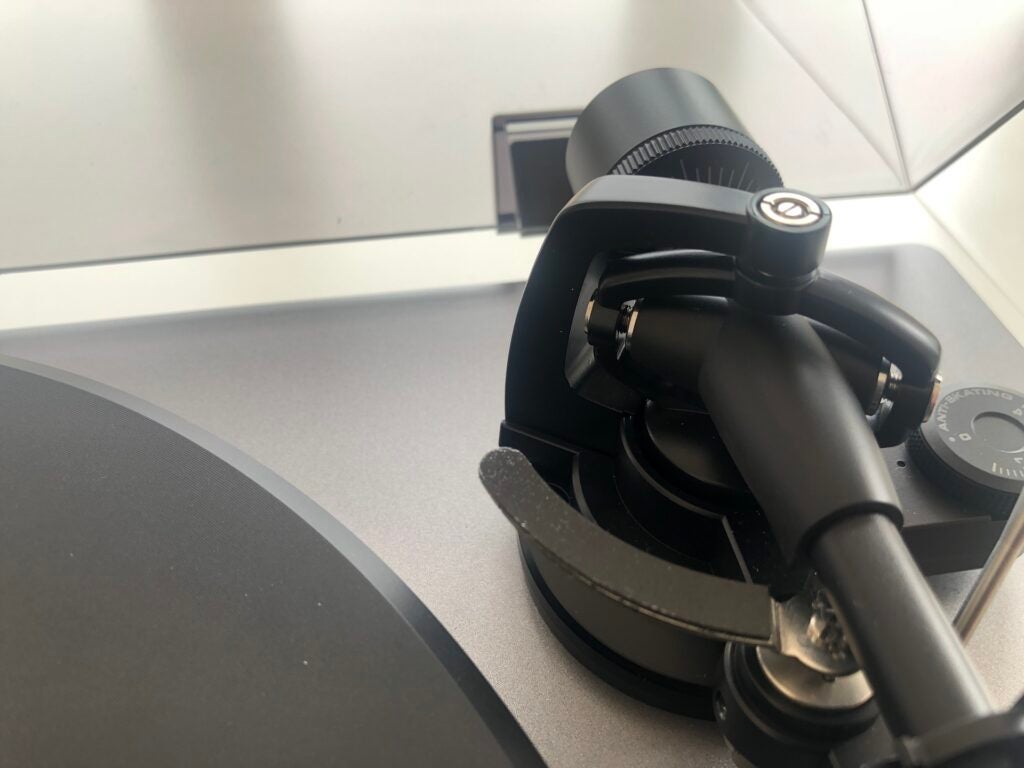
Both are direct-drive designs, too. It’s a configuration that’s more readily associated with DJ decks by Technics and all those Technics wannabes. However, Cambridge Audio doesn’t envisage you using the Alva TT V2 two at a time in conjunction with a mixer. The company reckons a medium-torque motor (which is what it has fitted), allied to a high-density platter (again, what it has fitted) provides ultimate rotational stability. It’s true that the platter takes a little longer to get up to speed than most alternative designs, but once it’s there, it seems disinclined to waver.
The more observant – or compulsive – among us will zero-in on the differences, though. The tonearm sports a new design, now with anti-skate as well as counterweight adjustment. The headshell, which comes pre-fitted with a Cambridge Audio high-output moving coil cartridge (replacement of which will set you back £499), is now detachable via its bayonet fixing.
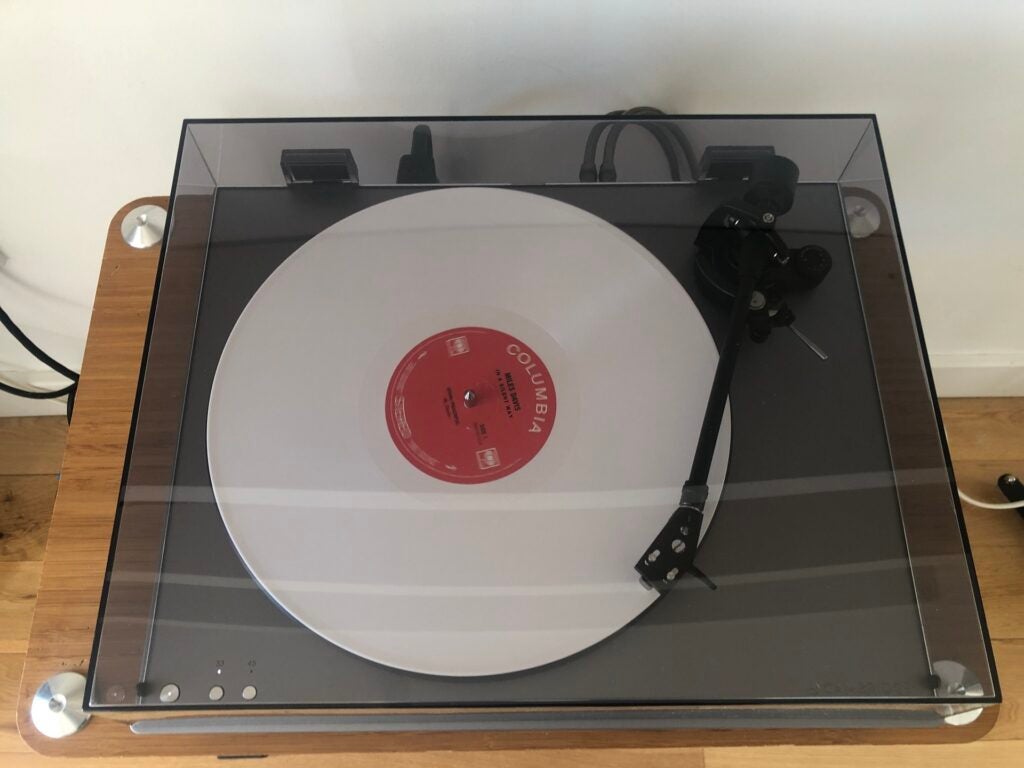
As far as actual, literal design is concerned, however, Cambridge Audio has very prudently left well enough alone. There was nothing wrong with the way the original Alva TT looked, after all. And as far as the design of record players in general is concerned, there’s a limit to what you can do and even greater limits on what’s acceptable.
Features
- 24bit/48kHz aptX HD Bluetooth streaming
- Integrated, switchable phono stage
- 33.3 and 45rpm
The Alva TT V2 has all the features you’d expect in a turntable at this sort of money. High-quality tonearm fitted with a high-quality cartridge? Tick. Inputs for stereo RCA analogue connections and mains power, rather than hard-wired alternatives? Tick. Switches for selecting either 33.3 or 45rpm speeds? Tick and tick again.
The Alva TT V2 also has an integrated phono stage, based closely on Cambridge Audio’s well-regarded Alva Duo stand-alone phono stage. This isn’t an unheard-of feature in turntables these days, but it’s most certainly useful. It allows the Alva TT V2 to slot into systems that lack the necessary oomph to amplify a turntable’s weakling signal on their own. And because it’s switchable (unlike the original Alva TT, which was always on), owners with a system that has phono amplification on board can compare and contrast.
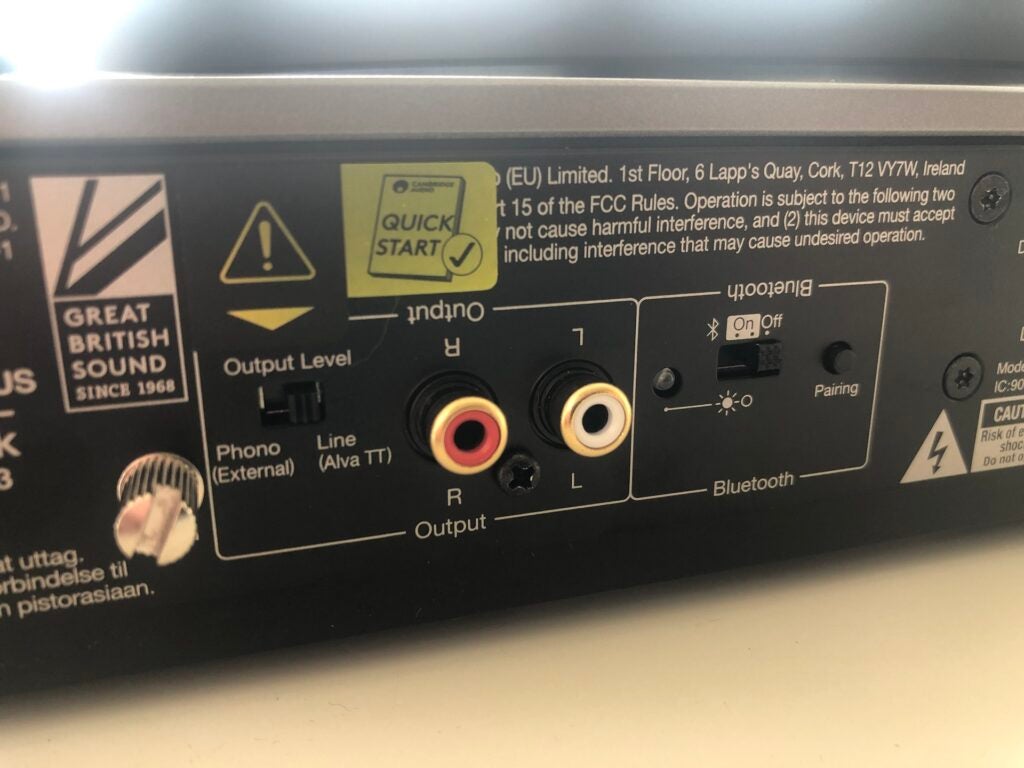
However, what really sets the Alva TT V2 apart is its Bluetooth streaming capability. Again, there are other turntables that can stream wirelessly; but this is the only one that does a high-resolution job on your vinyl. With aptX HD codec compatibility, the Cambridge Audio is able to send the sound of your records, wirelessly, at a 24bit/48kHz standard.
This means the Alva TT V2 is a turntable that can actually be used like turntables are in the films: positioned all by itself on a shelf, with no cables visible (because you’ve hidden the mains power cable, obviously), and miles away from the system to which it’s streaming.
Sound Quality
- Robust yet easy-going sound
- Hard-wired sound is genuinely impressive
- Not the most forthright listen
Despite its versatility, the Cambridge Audio Alva TT V2 is remarkably consistent in its overall performance, no matter how you choose to listen to it. It’s three sides of the same coin, if that can ever be a thing.
Of course, the temptation is just to use it wirelessly; it isn’t only super-convenient, it never stops being impressive. Just a mains lead? That’s all? It’s getting on for spooky.
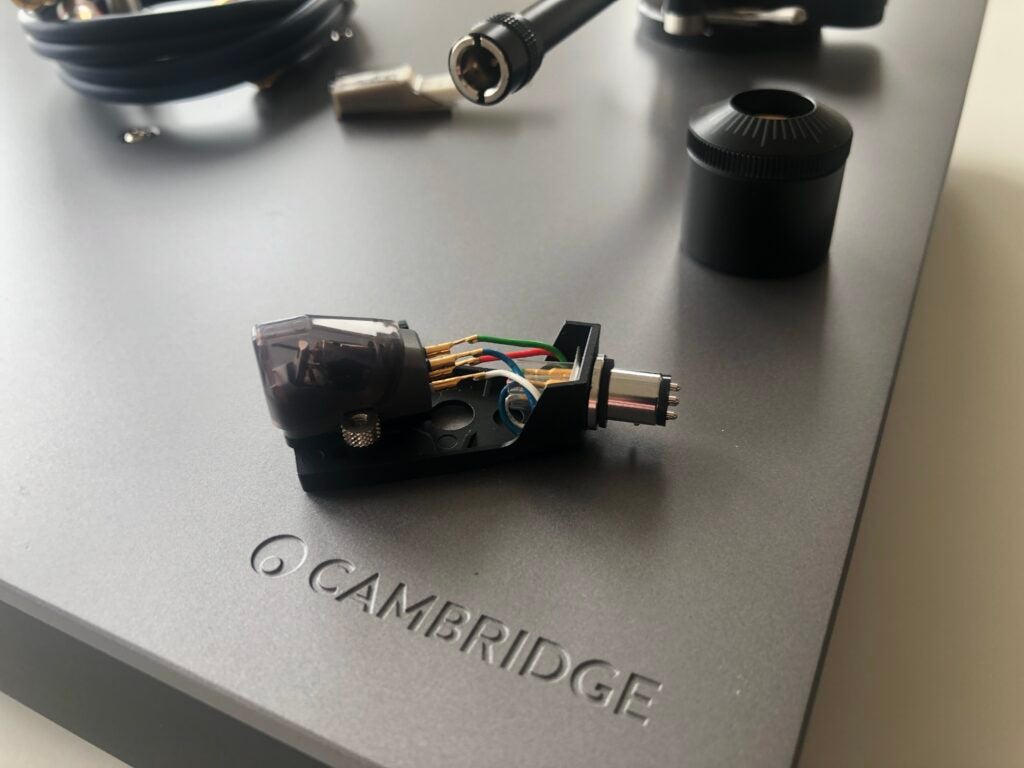
Streaming a heavyweight reissue of Kruder & Dorfmeister’s The K&D Sessions, the Alva TT V2 is a weighty, controlled and detailed listen. The top of the frequency range is just slightly understated, it’s true, but there’s still a degree of bite and attack to treble sounds. Bass is deep, textured and fairly straight-edged, so the sound never wants for momentum or solidity. And in-between the mid-range is seemingly every scrap of detail held in the vinyl groove – there’s real eloquence and confidence to the way the Cambridge Audio hands over voices.
The overall unity of the presentation is impressive, too. Vinyl has long been held as the premier format when it comes to presenting music as a coherent and unified whole, and the Alva TT V2 does nothing to sully that reputation. The sensation of the “performance” it’s able to generate, even with music that’s machine-generated to a lesser or greater extent, is considerable.
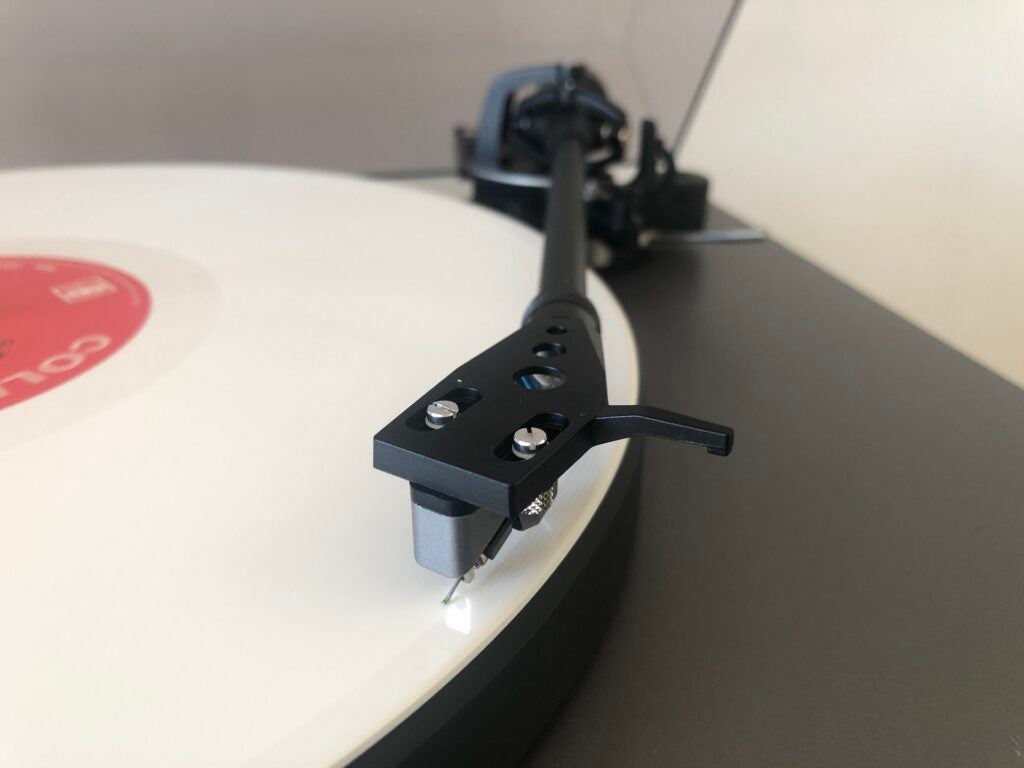
Switching a hard-wired connection to an amplifier (with the turntable’s integrated phono stage switched on) firstly seems to demonstrate that for all its convenience, wirelessly isn’t the best way to listen to this deck. Using a wired connection there’s noticeably greater positivity and control to the lowest frequencies, and a little more bite and alacrity at the top-end. Rhythmic expression is a little more naturalistic, too.
But this configuration also serves to spotlight those few areas where the Cambridge Audio is a little off the pace. It just isn’t that direct- or assertive-sounding a record player. Its aim, it seems, is to be as smooth and musical as possible.
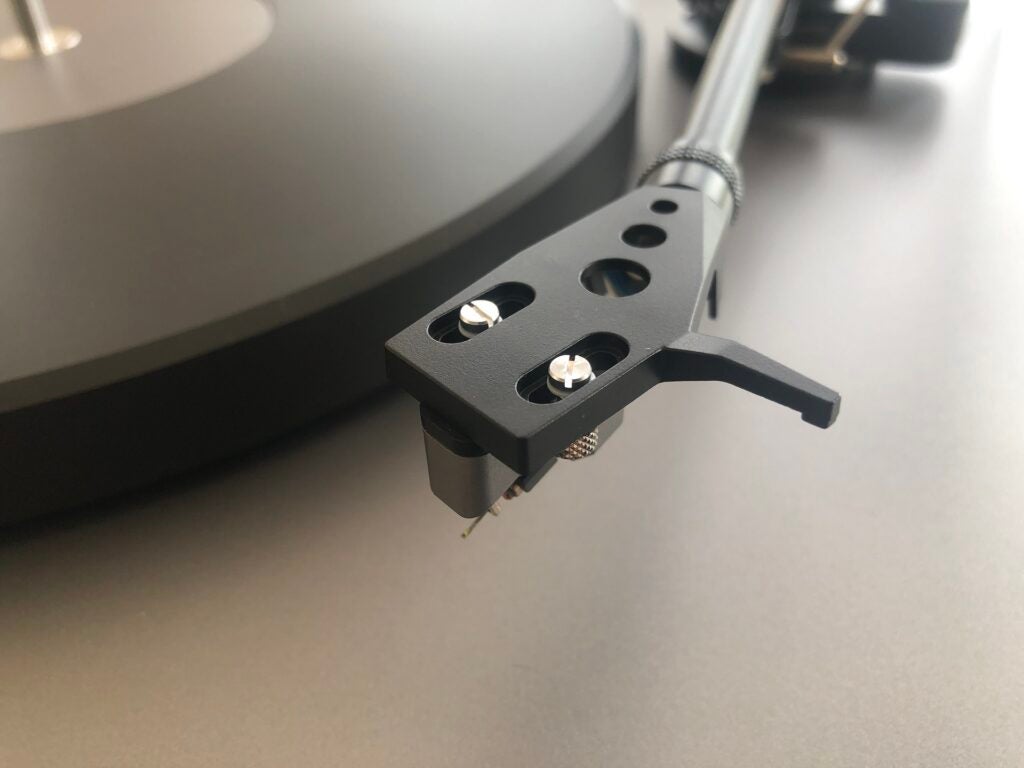
That’s a laudable ambition, of course, but it means the Alva TT V2 isn’t the most dynamic record player around. It does good work with the second-stage dynamic elements of a recording, but where the more attacking and upfront dynamics of volume and intensity variations are concerned, it’s a little inhibited. No one actively wants to be startled by their record player; but sometimes, a recording demands it.
It’s worth noting how capable the Alva TT V2’s integrated phono pre-amp is. Cambridge Audio has long delivered some of the best pound-for-pound stand-alone preamplifiers around, and the onboard version here doesn’t let the side down. Certainly you’re looking at around £400 for an external alternative, if you want to make a decisive improvement on what’s on offer here.
Latest deals
Should you buy it?
The idea of hi-res wireless vinyl appeals Other Bluetooth turntables exist, but none sound as good as this.
You want absolutely the best audio quality this money will buy The Alva TT V2 sounds great – but it can be bettered (by admittedly less convenient and well-specified alternatives).
Final Thoughts
Judged in purely sonic terms, the Alva TT V2 is giving away the last shred of performance (especially where drive and dynamism is concerned) to the best of its rivals. But those rivals can really only be judged in sonic terms – but the Cambridge Audio has its integrated amplification and hi-res wireless specification headline with which to tempt you. And tempt you it will.
How we test
We test every turntable we review thoroughly over an extended period of time. We use industry standard tests to compare features properly. We’ll always tell you what we find. We never, ever, accept money to review a product.
Find out more about how we test in our ethics policy.
FAQs
The Alva TT V2 record player supports SBC, AAC and aptX-HD Bluetooth.
Jargon buster
Bluetooth
Bluetooth – named after 10th-century Danish king Harald Bluetooth who united Denmark’s tribes into a single kingdom – is a method of wireless transmission that allows for the exchange of data between devices over short distances.
Platter
This is the surface the record sits and spins around on.
Verdict
The money you spend here could buy you a turntable that sounds a little more complete than the Cambridge Audio – but it won’t buy anything approaching the brilliance of the Alva TT V2’s specification.
Pros
- Extensive specification by turntable standards
- Poised, detail and engrossing sound
- Built to last
Cons
- Not the last word in audio excitement
- Sounds better when hard-wired
- lots of price-comparable alternatives
Introduction
In 2019, Cambridge Audio committed hi-fi heresy with the launch of its Alva TT turntable. Yes, it was recognisably a record player; but its integrated phono stage brought a degree of convenience to the notoriously inconvenient format.
Even more remarkably, the Alva TT featured aptX HD Bluetooth streaming at an undeniably high-resolution 24bit/48kHz standard – which meant a thoroughly unturntable-like level of flexibility where positioning, connections and so on were concerned.
Three years later, here’s the Alva TT V2. At a glance, it’s very similar indeed (except for the price tag, that is); but there have been changes, amendments and upgrades. So do these maintain Cambridge Audio’s position as purveyor of the world’s most convenient (and thus least audiophile) audiophile turntable?
Availability
- UKRRP: £1699
- USARRP: $1999
- EuropeRRP: €1999
- CanadaTBC
- AustraliaTBC
The Cambridge Audio Alva TT V2 is on sale now, and in the UK it currently costs £1699. That equates to $1999 in the USA, while in Australia you’re looking at AU$3699 or thereabouts.
Not only does this represent an increase in price over the model it replaces (the Alva TT cost £1499 when it launched), but it brings the Cambridge Audio into direct competition with some very well-regarded models from some very well-regarded brands. Clearaudio, Pro-Ject, Technics, Rega and VPI are just some of the big-hitters selling similarly priced turntables – although, as we shall see, in most cases the Alva TT V2 makes them look (in specification terms, at least) more than a little backward in their thinking.
Design
- Medium-torque direct-drive arrangement
- 33.3 and 45rpm
- Aluminium plinth
Put the original Alva TT next to this new model, and at a glance you’d be hard-pushed to tell the difference. Both feature a solid, nicely tactile aluminium plinth above a hefty lower chassis. Both have a chunky and inert polyoxymethylene platter – although the V2’s is only the size of a 12in vinyl disc, rather than slightly larger as the original’s was. Both have a smoked-plastic, hinged dust-cover; both have the “Cambridge” logo punched into the plinth at the bottom right, just below where the cartridge sits when it’s at rest.

Both are direct-drive designs, too. It’s a configuration that’s more readily associated with DJ decks by Technics and all those Technics wannabes. However, Cambridge Audio doesn’t envisage you using the Alva TT V2 two at a time in conjunction with a mixer. The company reckons a medium-torque motor (which is what it has fitted), allied to a high-density platter (again, what it has fitted) provides ultimate rotational stability. It’s true that the platter takes a little longer to get up to speed than most alternative designs, but once it’s there, it seems disinclined to waver.
The more observant – or compulsive – among us will zero-in on the differences, though. The tonearm sports a new design, now with anti-skate as well as counterweight adjustment. The headshell, which comes pre-fitted with a Cambridge Audio high-output moving coil cartridge (replacement of which will set you back £499), is now detachable via its bayonet fixing.

As far as actual, literal design is concerned, however, Cambridge Audio has very prudently left well enough alone. There was nothing wrong with the way the original Alva TT looked, after all. And as far as the design of record players in general is concerned, there’s a limit to what you can do and even greater limits on what’s acceptable.
Features
- 24bit/48kHz aptX HD Bluetooth streaming
- Integrated, switchable phono stage
- 33.3 and 45rpm
The Alva TT V2 has all the features you’d expect in a turntable at this sort of money. High-quality tonearm fitted with a high-quality cartridge? Tick. Inputs for stereo RCA analogue connections and mains power, rather than hard-wired alternatives? Tick. Switches for selecting either 33.3 or 45rpm speeds? Tick and tick again.
The Alva TT V2 also has an integrated phono stage, based closely on Cambridge Audio’s well-regarded Alva Duo stand-alone phono stage. This isn’t an unheard-of feature in turntables these days, but it’s most certainly useful. It allows the Alva TT V2 to slot into systems that lack the necessary oomph to amplify a turntable’s weakling signal on their own. And because it’s switchable (unlike the original Alva TT, which was always on), owners with a system that has phono amplification on board can compare and contrast.

However, what really sets the Alva TT V2 apart is its Bluetooth streaming capability. Again, there are other turntables that can stream wirelessly; but this is the only one that does a high-resolution job on your vinyl. With aptX HD codec compatibility, the Cambridge Audio is able to send the sound of your records, wirelessly, at a 24bit/48kHz standard.
This means the Alva TT V2 is a turntable that can actually be used like turntables are in the films: positioned all by itself on a shelf, with no cables visible (because you’ve hidden the mains power cable, obviously), and miles away from the system to which it’s streaming.
Sound Quality
- Robust yet easy-going sound
- Hard-wired sound is genuinely impressive
- Not the most forthright listen
Despite its versatility, the Cambridge Audio Alva TT V2 is remarkably consistent in its overall performance, no matter how you choose to listen to it. It’s three sides of the same coin, if that can ever be a thing.
Of course, the temptation is just to use it wirelessly; it isn’t only super-convenient, it never stops being impressive. Just a mains lead? That’s all? It’s getting on for spooky.

Streaming a heavyweight reissue of Kruder & Dorfmeister’s The K&D Sessions, the Alva TT V2 is a weighty, controlled and detailed listen. The top of the frequency range is just slightly understated, it’s true, but there’s still a degree of bite and attack to treble sounds. Bass is deep, textured and fairly straight-edged, so the sound never wants for momentum or solidity. And in-between the mid-range is seemingly every scrap of detail held in the vinyl groove – there’s real eloquence and confidence to the way the Cambridge Audio hands over voices.
The overall unity of the presentation is impressive, too. Vinyl has long been held as the premier format when it comes to presenting music as a coherent and unified whole, and the Alva TT V2 does nothing to sully that reputation. The sensation of the “performance” it’s able to generate, even with music that’s machine-generated to a lesser or greater extent, is considerable.

Switching a hard-wired connection to an amplifier (with the turntable’s integrated phono stage switched on) firstly seems to demonstrate that for all its convenience, wirelessly isn’t the best way to listen to this deck. Using a wired connection there’s noticeably greater positivity and control to the lowest frequencies, and a little more bite and alacrity at the top-end. Rhythmic expression is a little more naturalistic, too.
But this configuration also serves to spotlight those few areas where the Cambridge Audio is a little off the pace. It just isn’t that direct- or assertive-sounding a record player. Its aim, it seems, is to be as smooth and musical as possible.

That’s a laudable ambition, of course, but it means the Alva TT V2 isn’t the most dynamic record player around. It does good work with the second-stage dynamic elements of a recording, but where the more attacking and upfront dynamics of volume and intensity variations are concerned, it’s a little inhibited. No one actively wants to be startled by their record player; but sometimes, a recording demands it.
It’s worth noting how capable the Alva TT V2’s integrated phono pre-amp is. Cambridge Audio has long delivered some of the best pound-for-pound stand-alone preamplifiers around, and the onboard version here doesn’t let the side down. Certainly you’re looking at around £400 for an external alternative, if you want to make a decisive improvement on what’s on offer here.
Latest deals
Should you buy it?
The idea of hi-res wireless vinyl appeals Other Bluetooth turntables exist, but none sound as good as this.
You want absolutely the best audio quality this money will buy The Alva TT V2 sounds great – but it can be bettered (by admittedly less convenient and well-specified alternatives).
Final Thoughts
Judged in purely sonic terms, the Alva TT V2 is giving away the last shred of performance (especially where drive and dynamism is concerned) to the best of its rivals. But those rivals can really only be judged in sonic terms – but the Cambridge Audio has its integrated amplification and hi-res wireless specification headline with which to tempt you. And tempt you it will.
How we test
We test every turntable we review thoroughly over an extended period of time. We use industry standard tests to compare features properly. We’ll always tell you what we find. We never, ever, accept money to review a product.
Find out more about how we test in our ethics policy.
FAQs
The Alva TT V2 record player supports SBC, AAC and aptX-HD Bluetooth.
Jargon buster
Bluetooth
Bluetooth – named after 10th-century Danish king Harald Bluetooth who united Denmark’s tribes into a single kingdom – is a method of wireless transmission that allows for the exchange of data between devices over short distances.
Platter
This is the surface the record sits and spins around on.



















